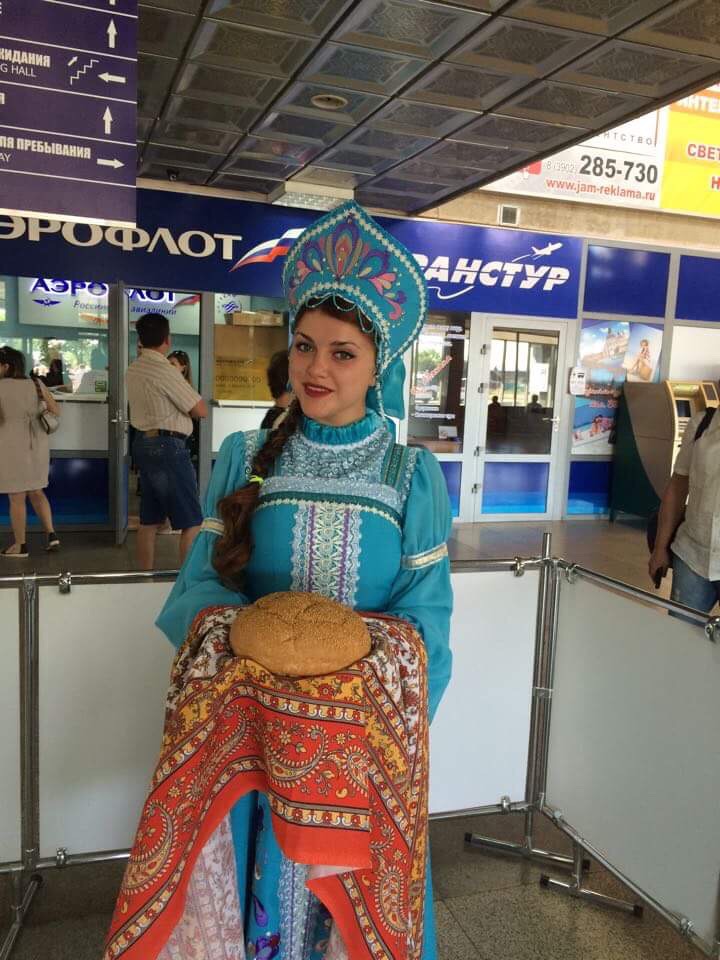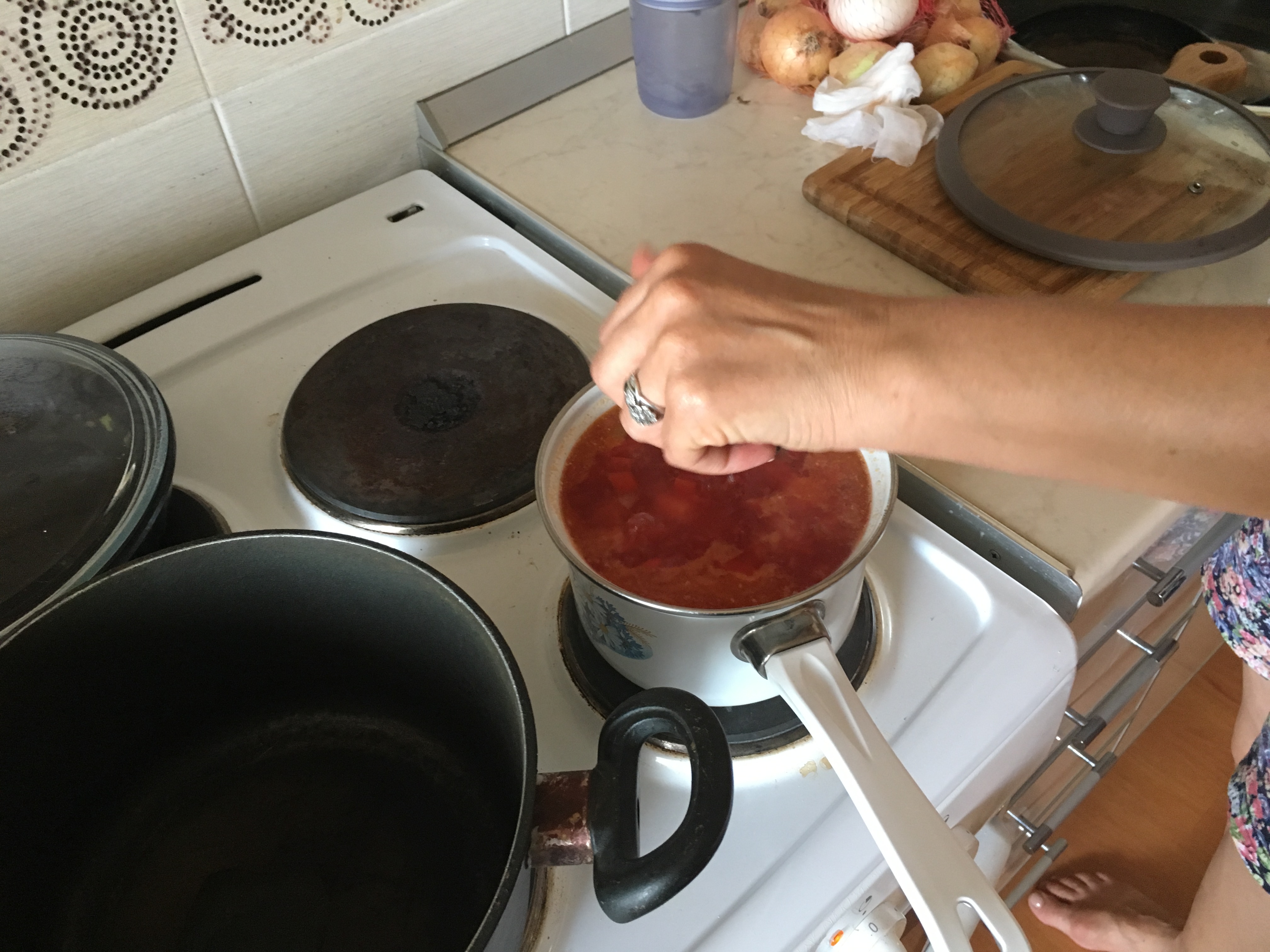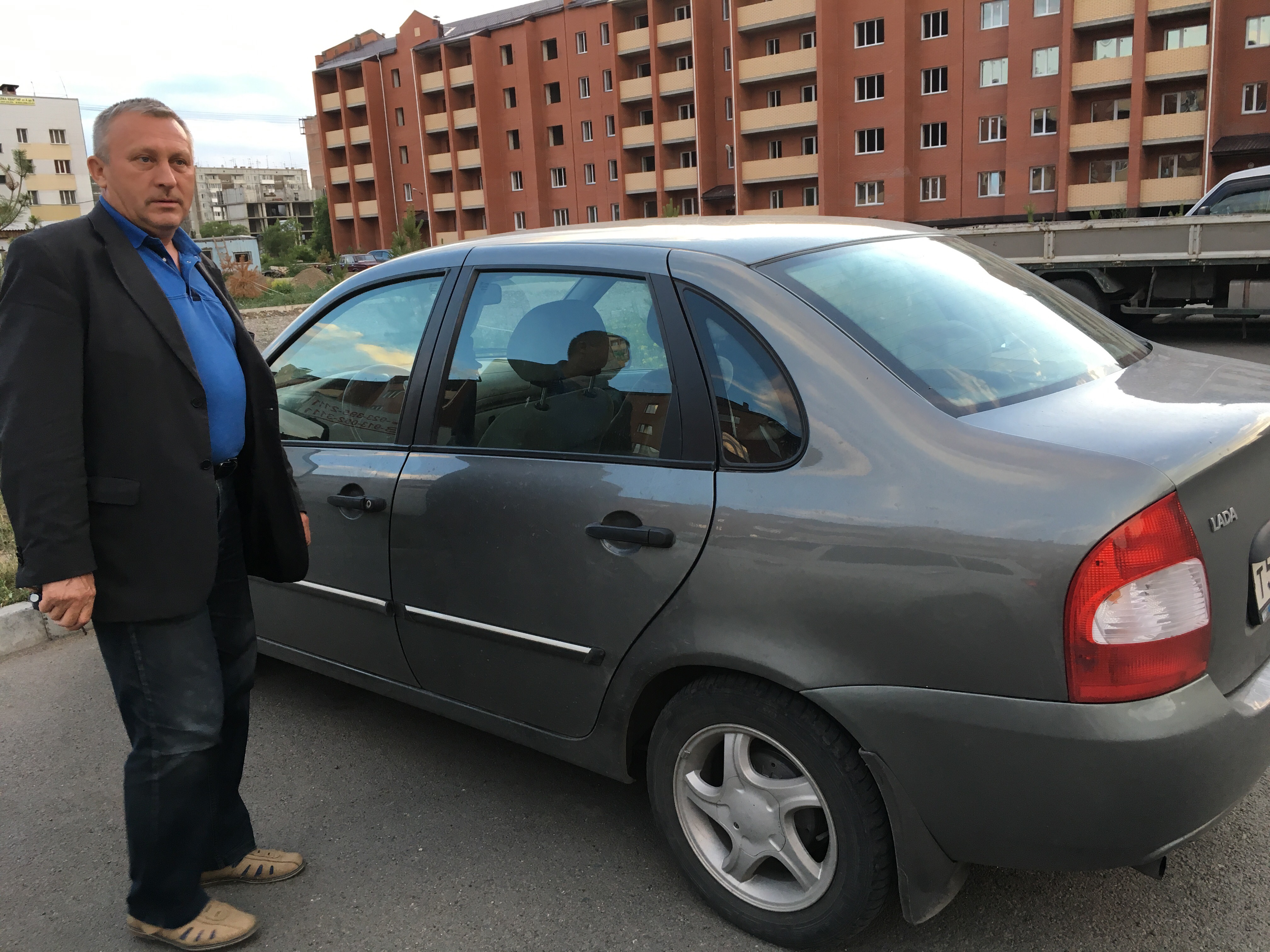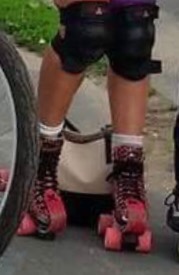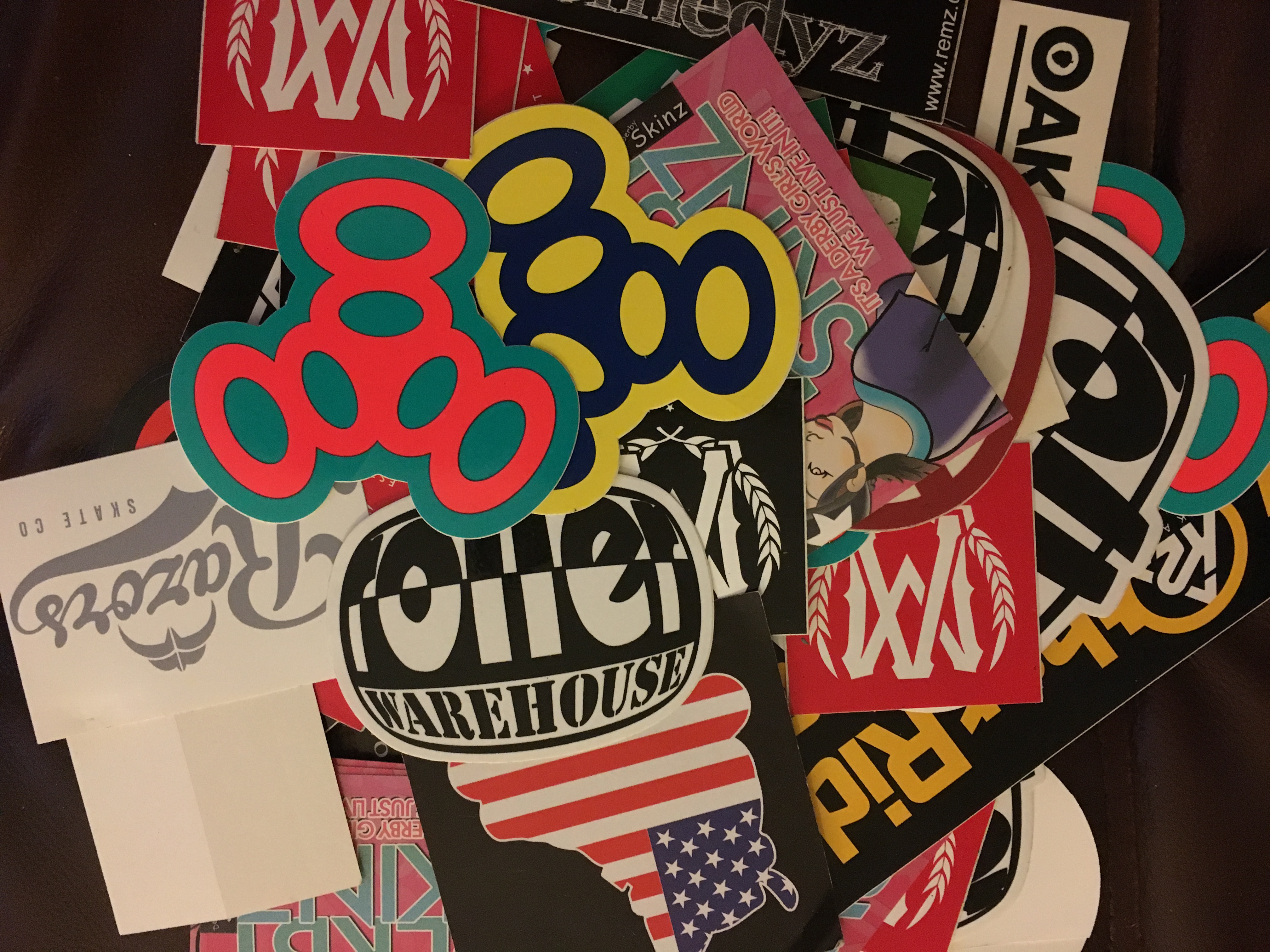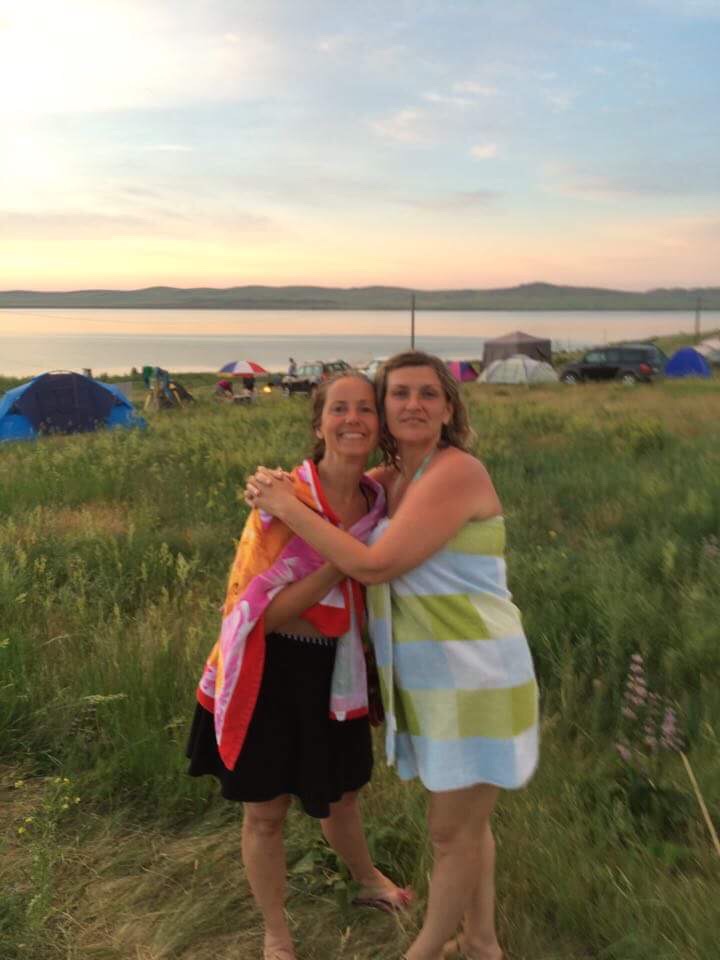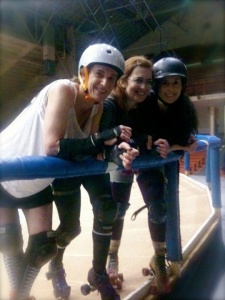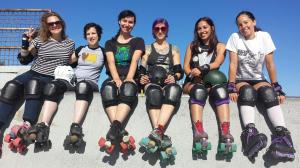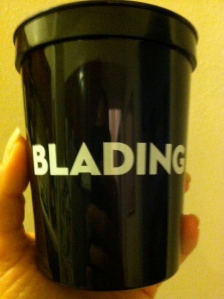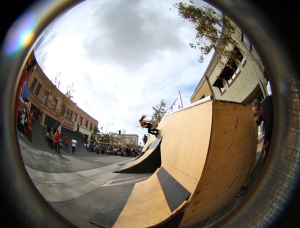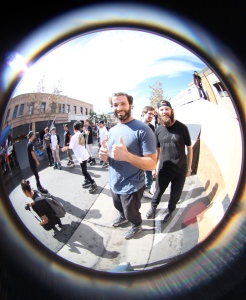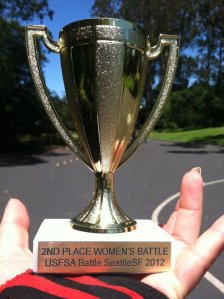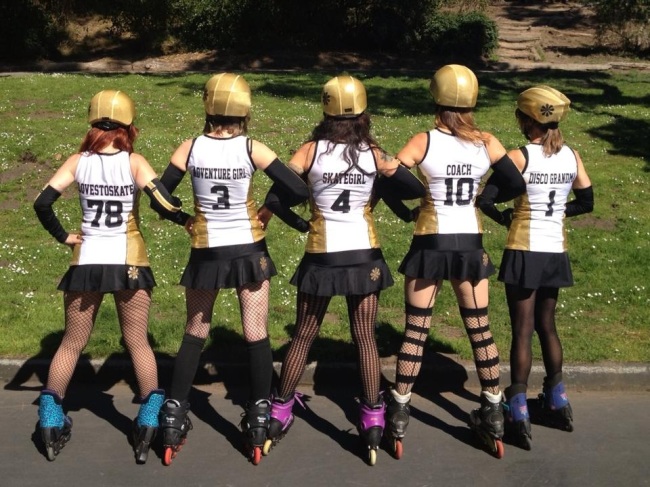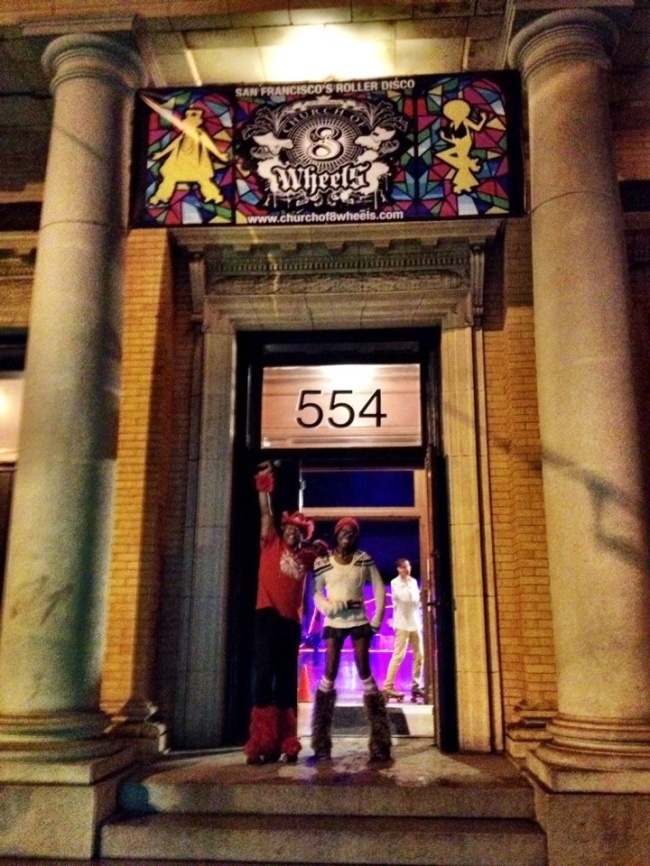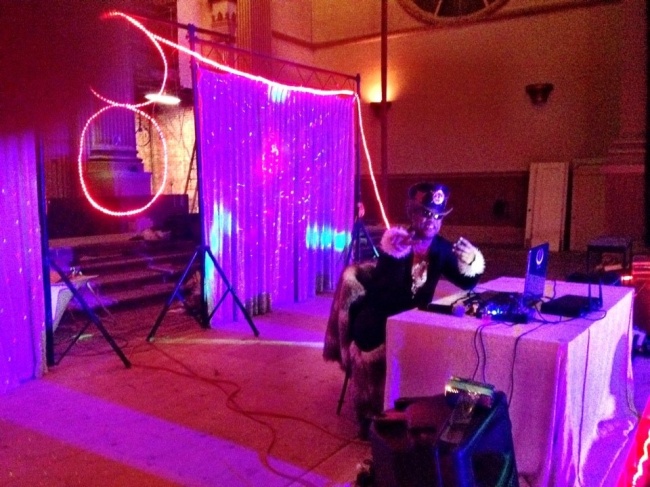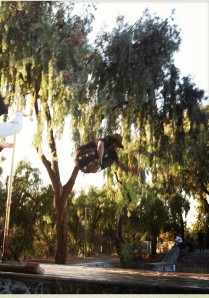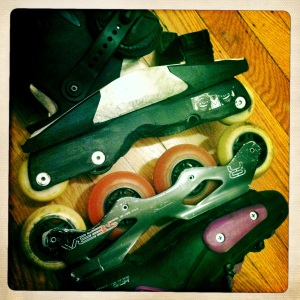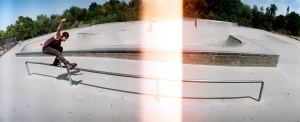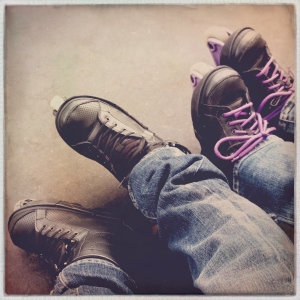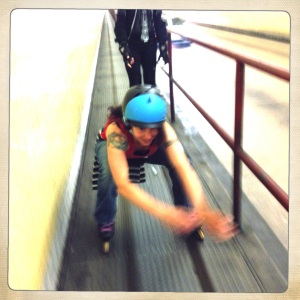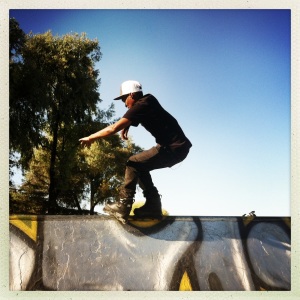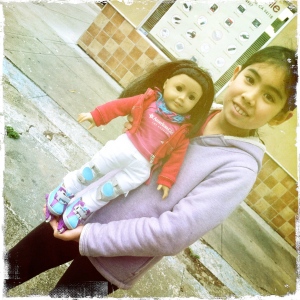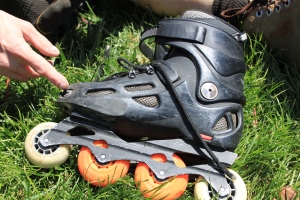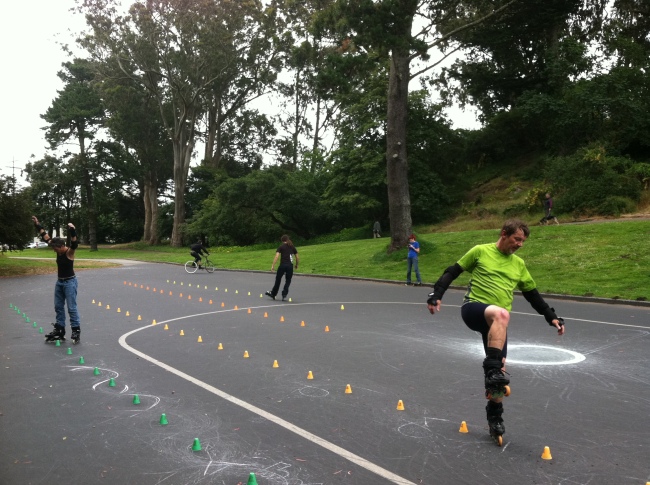On Boxing Day last year, I decided to engage in a popular skate challenge and chronicle my daily skating for 365 days. Since I was commuting on skates to work, rolling to my downtown class once-a-week, skating at the skatepark a couple of times each week, and attending a host of other random skate events, I figured it would be pretty simple. Since I consider the idea of posting each day exhausting, my plan was to just film a couple of seconds daily and edit those clips into a short monthly video. Initially, I planned to visit a different skate location each day for thirty days, focusing on a different trick for each of the thirty days, Then, for the rest of the year, I’d planned to practice those same 30 tricks at various spots, and hopefully, I’d improve my skills.
After my winter break was over, I soon realized that my biggest challenge would be to get to the skatepark in the afternoon and film while it was still light outside. It was a challenge that I dealt with by making sure that I got down to business with honing my trick as soon as I arrived at the skatepark, videoing often before I quite reached “the zone.”
At work each day, I’d decide where to go, deliberating on which trick to practice. Thus, I developed a master list of the local spots and the skills I wanted to work on. These ranged from tricks I could already do on three-foot ramps to more intermediate moves that I had never even tried, and basically each had been chosen for a different reason: some are skills I felt I should have already mastered; some are just fun for me and needed polishing, and others were ambitious but likely attainable with practice.
This goal for 2020 was not without injuries.
My first one was something called a bone bruise. I did this while up in Marin at a skatepark near a middle school. My biggest mistake on that particular day in January was not predicting the hoards of teen boys who would be there at 5PM on a weekday. I wish I’d been filming because the maneuver was actually amazing. After dropping in and barreling toward the center of the park, a 13-year old kid must have done the same thing from the other end. We would have collided had I not veered left, jumped like a gazelle over a pile of backpacks, and landed beautifully on the other side. I immediately rammed my leg into the metal coping attached to a concrete fun box. Falling to the ground and grabbing my leg, I turned my gaze toward all the boys who were staring in my direction. “That was exquisite!” I thundered. Several years ago, I had a similar accident with metal coping and after getting stitches, I have been wearing shin guards ever since. Magically, this time, that little piece of protective equipment saved me from a broken tibia.
In February, I had just executed a little side-surf hand plant and was rolling backwards to get in line to try again. Halfway between the ramp and the line, after a crossover of my right foot, my feet were too close together, and the wide trucks on my right skate got stuck between the front and back inside wheels of my left skate, and down I went. I knew immediately that my wrist was broken. My frustration almost brought me to tears at the skatepark because I wasn’t completely healed from a broken wrist on my opposite arm. Thankfully, we were pretty close to the urgent care clinic. After a brief wait, the attending physician’s assistant confirmed that it was broken, wrapped me in a temporary cast, and sent me home. Since I hadn’t gotten a clip for that day, that evening I practiced some dances that Richard Humphrey had planned for us to do at a performance the following weekend. It was at this point that I decided that I would have to modify my skate goals for the year; after all, I couldn’t drive and needed help to even tie my laces. I also decided to retire my penny trucks.

My new goal was to just skate and get a short clip each day. When it was convenient, I conferred with my list and practiced a few of the skills. No longer could I get to a skatepark every day, but I could still skate outside, at The Church of 8 Wheels, and at Golden Gate Park.
Even though I’d been following the news of Coronavirus since mid-February, regularly wore a mask, and frequently disinfected my hands, I was still shocked to hear one day that the teachers at my school must pack up all textbooks, workbooks, and any other materials we needed for instruction because Mayor Breed had said we were going to “shelter in place.” I couldn’t even skate back home because I had so many teacher addition textbooks and other materials. Our principal said that we would move our spring break to the following week and spend our break learning how to teach online.
During spring break, I spent each day learning how to most effectively use an online grammar program, transferring my students’ grades and all of their lessons to an online platform, and learning to teach on Zoom. In the evenings I would skate in my hallway. It was during this time that some skates I’d had built the previous month were completed. Stephanie from Quad Republic generously offered to mail them to me because at this point in the pandemic, we were not allowed to cross county lines and could not even leave the house except for essential trips. Because of my stellar experience, I strongly recommend this company for their amazing customer service and wide variety of good quality skates and accessories. Receiving that package in the mail was one of the highlights of my time during SIP.

I continued to skate in the hallway for the next couple of months until it was deemed safe to go outside again. Thankfully, there was a plethora of live online skate lessons, YouTube videos, and groups to inspire me to stay active. I am especially grateful to the weekly lessons offered by Richard Humphrey and Reggie “Juice” Dillon. Some days I’d just scroll around on Instagram for ideas about what to practice.
Then we were told it was safe to skate outside, as long as we stayed socially distanced. My sports medicine doctor cleared me to work on handstands and all other activities involving my hands and arms. Since it still wasn’t prudent to hold the Friday Night Skate, and JFK Drive in Golden Gate Park is temporarily closed to car traffic, The Godfather of Skate – David Miles – and his son, David Miles III decided to engineer a smaller evening skate through the park. Until our latest lock down, I was able to attend this skate on a few occasions, and I loved it. It was about 4 miles, low-key, attended by only a few people, included a couple of fun hills, and lasted about 45 minutes.

A few days before the 183rd day marking the half-year point of my 365 days of skate, I was attempting a half-cab. This is a fakie (backwards) trick where you skate up a ramp and turn 180 degrees to land forward on the coping. When I landed, only my right foot was securely on the coping, and I tried a little hop to get my left foot on. This was ineffective, though, because I’d already started to roll back down, and when I jumped, all I managed to do is trip myself with my right foot, causing myself to flip mostly upside down onto my lower back. It was so painful when I landed, that I almost blacked out, and my vision started to close into a tunnel. I’ve always been able to get up quickly from a fall, even if I’ve broken a bone, but not this time. My legs would not even react when I tried to stand up. My partner rolled over to me and told me to stay put, which was great advice since I’ve seen people fall and then pass out when they try to stand. The pain was overwhelming, but five minutes later I was able to get up and roll away. Although this was my hardest skating fall ever, it was also a great teachable moment for three reasons: For one thing, I learned to just accept when I’m not going to land a trick and know that I can simply retry it; for another reason, somehow, I didn’t get my hand down fast enough to break my wrist, so it could’ve been worse; and finally, a few inches to the left, and I could’ve broken my tailbone. This led me to momentarily consider investing in some padded shorts. Even though they are pricey; I am sure they are worth every penny.
Then there was fire season. During this period, I mostly skated in my hallway. On some nights when the air quality was the least bad it had been all day, I’d put on my skates to walk the dogs or roll around briefly in the parking lot near my house. These were days that it was just nice to get outside for a few minutes. There was one time, though, when I could only skate in the house; that’s when the sky was brown for two days.

After a couple of months, I had pretty much healed up and could push myself a little more while attempting skate tricks. Since I still have problems with the wrist I broke in January, I decided to shift my focus to improving my jumps. This, coupled with the fact that I have no desire to mingle with people during a pandemic, has led me to be more creative with my skating.

Therefore, during the last few months of my skating challenge, I have hardly been to a skatepark at all. This crisis has led me to make my own skatepark from the world around me. The man-made landscape of the city includes ramps, protruding asphalt built over bulging tree roots, ledges, ADA rails, and stairs – many stairs. Schools offer a whole smorgasbord of skateable features; hence, with the closure (and with some of them even having open playgrounds), the availability of things to jump from, roll down, or spin through is serendipitous.

As far as meeting all of my goals is concerned: I didn’t nail every trick on the now raggedy list I toted around with me all year. My 360s are still a work in progress, and my rodeos need intervention from a professional. But what I did do is attempt everything on that list – many times. Some tricks I tried and even mastered. I am stronger and healthier than I was at this time last year; furthermore, I am able to look around wherever I am and determine what I can skate. The world presents itself in a whole new way for me now. I’ll see people posing at a stadium in a friend’s Facebook post and think, “that looks skateable.”

Another thing that helped my year of daily skating be a success is that I took on several private students. Who knew how popular roller skating would become during the pandemic? Even though restrictions now recommend that we not gather with those outside our households, during the pre-surge months, I met on several afternoons per week with both adults and children. Some of these skaters only needed one lesson, but others came to lessons regularly. My schedule was pretty busy during the late summer and fall. Once school started again, I would get my dogs walked earlier and make sure I put my skates on between Zoom sessions so that I could leave as soon as my online classes were done for the day. Then I would race over to Golden Gate Park to teach my eager pupils.

Conversely, there were even moments that I didn’t really feel like skating. Maybe I was sluggish from sitting behind the computer all day, or perhaps I just felt like I needed a rest or was unmotivated. There were honestly only about three such days, and once I got my skates on and started moving, I felt so happy and free to just be skating.
On Christmas Day I celebrated my accomplishment by making goals for next year. Once that was done, I put on my quads and went for a skate.

